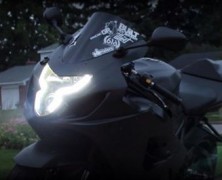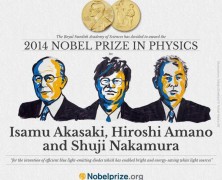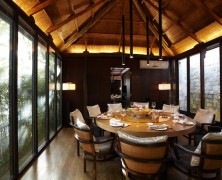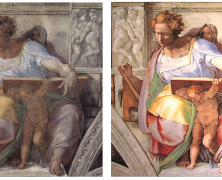In New York City, 300,000 to 400,000 people recently took to the streets calling for action on climate change. These concerned world citizens would be pleased to note that as we shift away from inefficient incandescent bulbs, those who choose LED lights are helping address climate change by minimizing humanity’s environmental impact. Electricity production is the single largest contributor to CO2 emissions, accounting for 38% of U.S. emissions from 1990-2012. LEDs help us address climate change by lowering our electricity demand and therefore lowering our CO2 emissions. While installing LED strip lights in your kitchen won’t stop global warming, if you choose to make the investment in LEDs, you’re doing your part to slow its progress. Here are the top environmental reasons for choosing LEDs over other conventional lighting sources: Energy Efficiency High quality LED lights work at 80% efficiency. That means that 80% of the electricity used by an LED chip goes straight into producing light. Compare that to an incandescent bulb, which in many cases is just 20% efficient — 80% of the electricity used is transferred into heat instead of light. The U.S. Energy Information Administration estimates that in 2012, lighting constituted 17% of the total energy used by homes and businesses in the United States. Switching our lights over to LEDs, making them use electricity with 80% more efficiency, would have a dramatic impact on our CO2 emissions. There are other cases where LEDs will come in handy as well, such as LED refrigerator display lighting and poultry farming, where we can further lower energy demands since cool LED running temperatures require less artificial cooling. Furthermore, LEDs produce directional light, meaning light isn’t wasted in directions where it isn’t needed. Less Waste The typical lifespan of an incandescent bulb is 750 to 1,000 hours. CFLs,...
Customer Testimonial: DIY Motorcycle LED Mod...
posted by Taran Volckhausen
The latest in a long line of creative Flexfire LEDs customers, Nick Hopkins wanted to complete a DRL (“Daytime Running Lights”) modification on his 2004 Suzuki GSX-R motorcycle. After some research, he decided to use our UltraBright™ Design series Bright White LED strip lights for this distinctive DIY motorcycle LED mod. To install the lights, he started by cutting the LED strips to size. He then soldered the strips together and set them in a plastic fiberglass casing he made himself. As a finishing touch, he plastidipped the fiberglass casing in black to match the color of his bike. The 12v DC lights were then wired to the battery (which also runs at 12v DC) so they would come on every time Nick starts the engine. Daytime Running Lights are generally installed for safety reasons. Once installed, DRLs automatically switch on whenever the engine is engaged, increasing a rider’s visibility on the road. For a number of reasons, Flexfire LEDs strip lights are the best solution for motorcycle DRLs. First, they’re highly energy efficient, so they won’t tax your bike’s battery; also, they’re made of top quality components, meaning you can rely on them to function years into the future. Finally, they’re incredibly bright, making them a safer option than other low quality alternatives. Our high quality LED strip lights are the brightest on the market, built to the quality standard you’d expect and trust. They are rated to last for 50,000 hours of continual use, meaning they’re likely going to last for the entire lifetime of your bike. In Mr. Hopkins’s case, he was so pleased with the results that he shared a picture on our Facebook page. “Everyone can’t believe how bright they are,” he commented. We’d like to thank Nick for trusting Flexfire LEDs with his...
Invention of Blue LED Wins Nobel Prize...
posted by Flexfire LEDs
The Nobel Prize rewards an invention “of greatest benefit to mankind“, and this year, that distinction recognized LED lighting as an energy-efficient technology that will fundamentally change the way we see our planet. The Royal Swedish Academy of Sciences announced that three scientists were awarded the 2014 Nobel Prize in Physics for inventing the blue LED. Isamu Akasaki, Hiroshi Amano, and Shuji Nakamura were the first to generate blue LED light, a feat that had eluded scientists for decades. Green and red LED lights had long since already existed, but blue light was necessary to combine with green and red to generate white light, as seen below. Once blue LEDs were created, it allowed the commercial development of white LED lamps, which are now revolutionizing the lighting and energy sectors worldwide. It’s why we’re currently seeing a rapid transition to LEDs in everything from home and hotel illumination to massive infrastructural city lighting in places like London, Tokyo and New York. Interestingly, blue LEDs are also showing promise in the treatment of Alzheimer’s disease, and were even used to reverse paralysis in laboratory mice. Among many other benefits, LED lamps are often recognized as being extremely energy-efficient. This is mainly reflected in a lamp’s “lumens per watt” data, which indicates the amount of light generated (“lumens”) per watt of energy used. High quality LEDs are capable of generating upwards of 300 lumens per watt, vastly outperforming incandescent and fluorescent lighting sources (16 lumens/watt and 70 lumens/watt, respectively). Further, LEDs last 10 to 100 times longer than competing technologies, which allows for a dramatic reduction in waste and material consumption. LED light is seen as a bright beacon for those in the developing world, where access to electricity often comes at a premium. “The LED...
What To Consider When Comparing LED Strip Lights...
posted by Taran Volckhausen
Much of the time, buying LEDs online isn’t so much a walk in the park as it is an expedition through the jungle. There are numerous competing brands in a poorly standardized market, making it hard for customers to understand which to choose. To help clarify the situation, here are the main LED lighting properties to consider when comparing LED strip lights. Lumens The measure of lumens is the measure of how much “visible” light is emitted from a source. For LED strip lighting, the amount of lumens will tell you how much light will be produced. The lumen output from our LED strip lights is measured in both lumens per reel and lumens per foot. To find the total amount of lumens produced by your installation, multiply the lumens per foot by how many feet of lights you’ll be rolling out. The highest lumen output LED strip light we carry is the UltraBright™ Bright White Industrial Series strip, which emits a whooping 11,000 lumens per reel. Watts Check the wattage to find out how much energy the LED strip light you are considering will use. LEDs are a highly efficient form of lighting, but depending on the manufacturer, some chips will use less energy than others. To see how efficient any light is, divide the amount of lumens produced by the number of watts it requires (“lumens per watt”). All Flexfire LEDs strip lights are highly efficient, though our “cool” temperature (brighter) lights are generally the most efficient because they don’t require as much phosphor coating. Color Rendering Index (CRI) Not all light is made equally; some light renders color better than others. CRI, Color Rendering Index, measures how natural colors look under a light source when compared with sunlight. The index runs from 0-100, with...
Sistine Chapel LEDs: A Masterpiece Of Fine Art Lighting...
posted by Taran Volckhausen
The Sistine Chapel ceiling frescoes are the world’s most recognized works of art by High Renaissance artist Michelangelo. Epic in scope, the frescoes, which depict scenes from the Book of Genesis, have been described as “an artistic vision without precedent,” and “a veritable beacon to our art, of inestimable benefit to all painters, restoring light to a world that for centuries had been plunged into darkness.” While Michelangelo’s works may have lit the way for untold numbers of artists who followed, until recently, inefficient, lifeless, and heat-generating halogen lamps were being used to light his masterpiece. Recognizing the potential for improvement, multinational lighting manufacturer Osram teamed with universities and private institutes to install a new LED lighting system for the Vatican masterpiece. The EU and private funders helped fund the installation, which was designed to address the shortcomings of the previous lighting system Installed in the 1980s, the original halogen lamps failed to highlight the full scope of colors used in the piece, while converting only 10% of the energy used into light (the other 90% was lost to heat generation). Combined with this high heat output, an increasing number of yearly visitors meant rising temperature concerns, which could potentially damage the work itself. For this new installation, 7,000 low-heat LEDs were specially adjusted to create the most natural, homogenous fine art lighting possible. The hue of each LED was individually adjusted until the results were precisely matched to the color pigments used 500 years ago by Michelangelo in the different sections of the massive work of art. According to Mourad Boulouednine, Osram’s regional head of projects, the Renaissance pigments required a different color rendering index than the ones made available the eight standard testing colors. After performing an optimization process by analyzing light coming from a particular spot on the piece, the...










